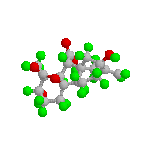|
History of Discovery in Plants
Ethylene has been used in practice since
the ancient Egyptians, who would gas figs in order to stimulate
ripening. The ancient Chinese would burn incense in closed rooms
to enhance the ripening of pears. It was in 1864, that leaks of
gas from street lights showed stunting of growth, twisting of plants,
and abnormal thickening of stems (the triple response)(Arteca, 1996;
Salisbury and Ross, 1992). In 1901, a russian scientist named Dimitry
Neljubow showed that the active component was ethylene (Neljubow,
1901). Doubt discovered that ethylene stimulated abscission in 1917
(Doubt, 1917). It wasn't until 1934 that Gane reported that plants
synthesize ethylene (Gane, 1934). In 1935, Crocker proposed that
ethylene was the plant hormone responsible for fruit ripening as
well as inhibition of vegetative tissues (Crocker, 1935). Ethylene
is now known to have many other functions as well.
Biosynthesis and Metabolism
Ethylene is produced in all higher plants
and is produced from methionine in essentially all tissues. Production
of ethylene varies with the type of tissue, the plant species, and
also the stage of development. The mechanism by which ethylene is
produced from methionine is a 3 step process (McKeon et al., 1995;
Salisbury and Ross, 1992).
ATP is an essential component in the synthesis of ethylene from
methionine. ATP and water are added to methionine resulting in loss
of the three phosphates and S-adenosyl methionine.
1-amino-cyclopropane-1-carboxylic acid synthase (ACC-synthase) facilitates
the production of ACC from SAM.
Oxygen is then needed in order ro oxidize ACC and produce ethylene.
This reaction is catalyzed by an oxidative enzyme called ethylene
forming enzyme.
The control of ethylene production has received considerable study.
Study of ethylene has focused around the synthesis promoting effects
of auxin, wounding, and drought as well as aspects of fruit-ripening.
ACC synthase is the rate limiting step for ethylene production and
it is this enzyme that is manipulated in biotechnology to delay
fruit ripening in the "flavor saver" tomatoes (Klee and
Lanahan, 1995).
Functions of Ethylene
Ethylene is known to affect the following
plant processes (Davies, 1995; Mauseth, 1991; Raven, 1992; Salisbury
and Ross, 1992):
- Stimulates the release
of dormancy.
- Stimulates shoot and
root growth and differentiation (triple response)
- May have a role in
adventitious root formation.
- Stimulates leaf and
fruit abscission.
- Stimulates Bromiliad
flower induction.
- Induction of femaleness
in dioecious flowers.
- Stimulates flower
opening.
- Stimulates flower
and leaf senescence.
- Stimulates fruit ripening.
|



